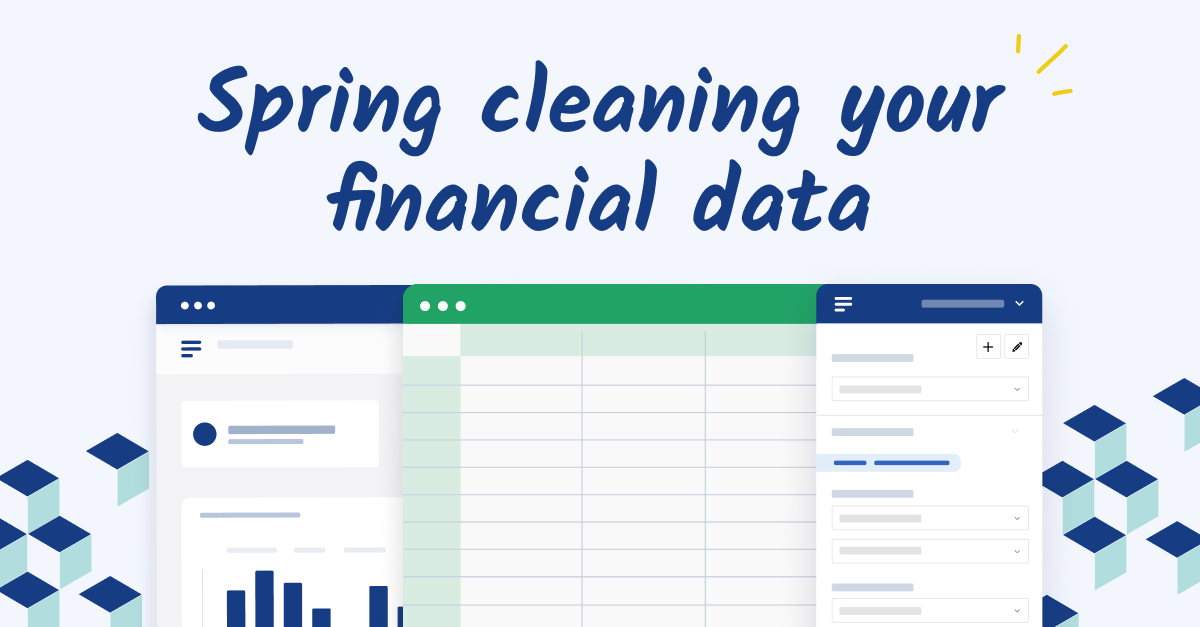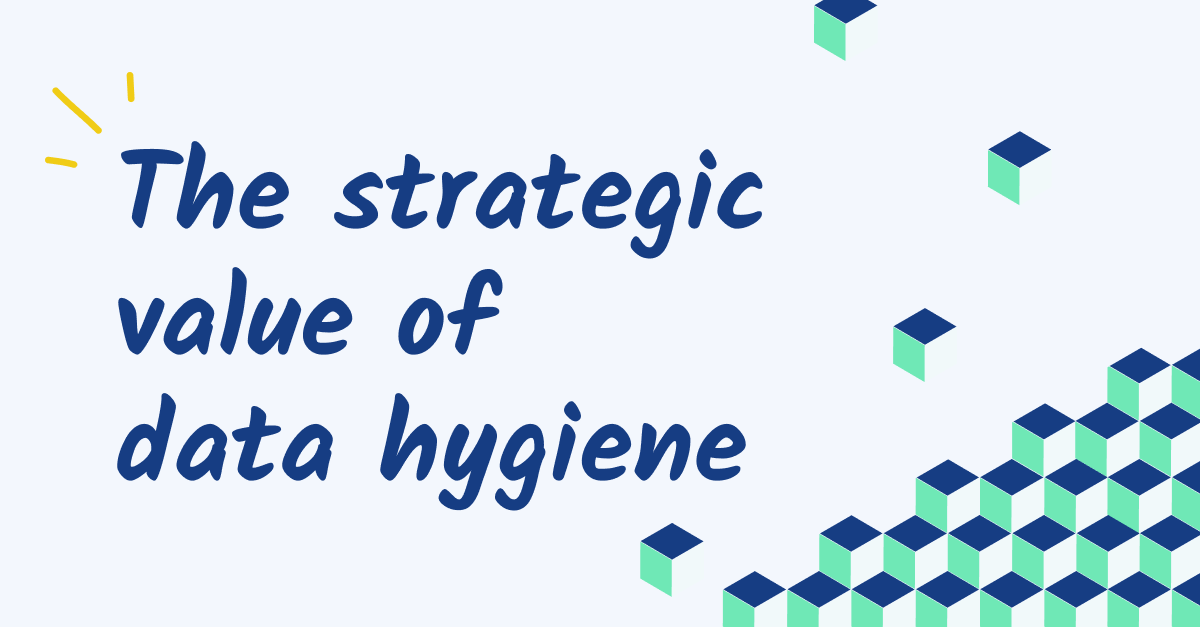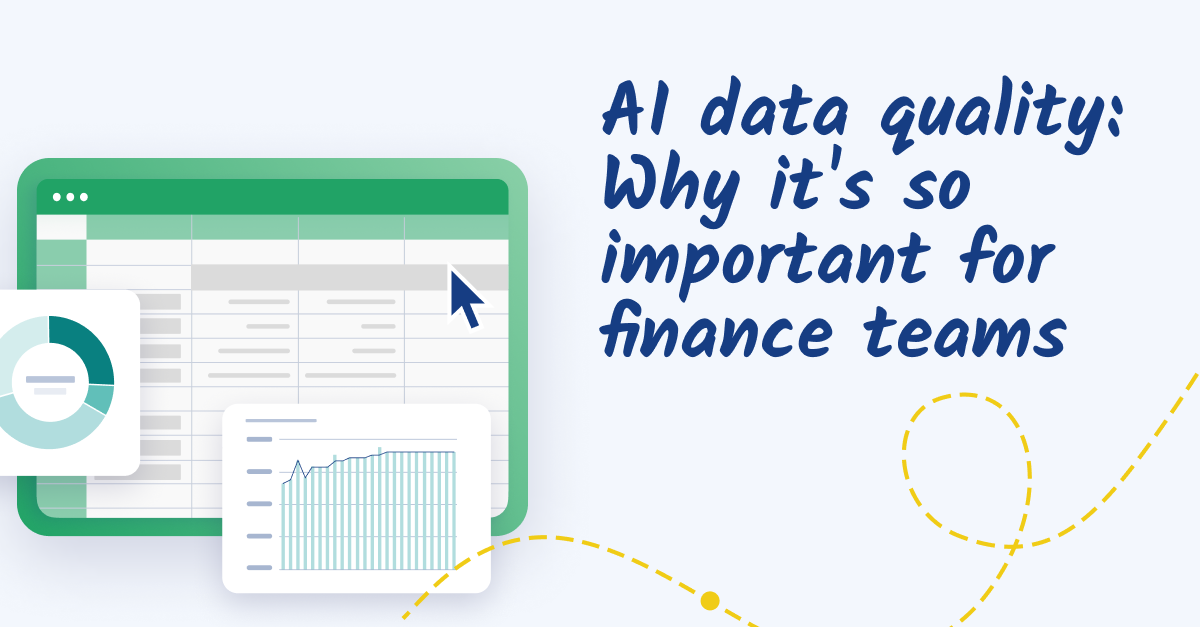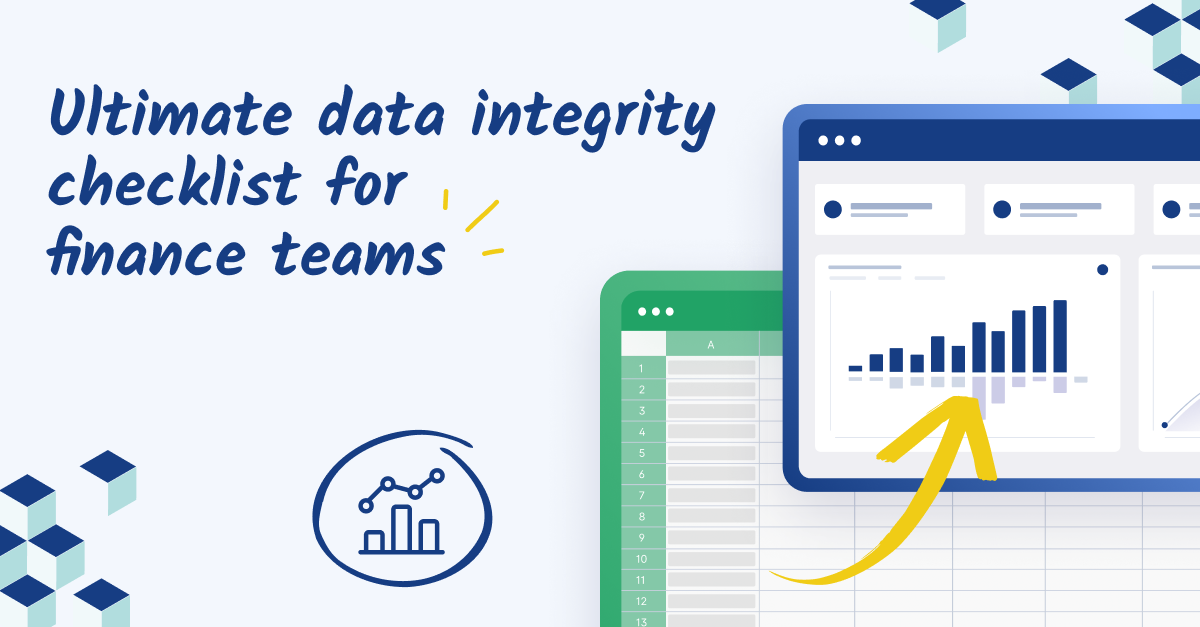Why spring cleaning is essential to finance
Spring cleaning your financial data is more than a routine check—it's a critical practice that ensures healthy, efficient finance operations.
As you know, when it comes to financial data, the stakes are high and the margin for error is slim. Ignoring a thorough data clean-up can cause major issues that impact both the daily operations and strategic direction of your business.
Some of the major consequences of neglected financial data include:
- Inaccuracies and mistakes: As data accumulates unchecked, errors and discrepancies become more frequent. These can range from minor miscalculations to severe financial misreporting, leading to faulty decision-making at the highest levels.
- Reduced efficiency: Outdated and redundant data slow down processes, making it harder to retrieve necessary information and bogging down technology platforms with useless data.
- Compliance risks: Financial data is subject to various regulatory standards that require accuracy and timeliness. Non-compliance due to outdated or incorrect data can result in legal penalties and damage to your company’s reputation.
But the negative consequences aren't the only reason to maintain clean financial data. Keeping tabs on your financial data can afford you many benefits, as well, including:
- Enhanced forecasting: Clean data allows for more accurate modeling and forecasting, empowering you to predict future trends and prepare accordingly.
- Streamlined automation processes: With cleaner data, automation tools perform more efficiently. Automated reports, analytics, and transaction processing systems work better with high-quality, relevant data, reducing the human effort needed for data management.
- Improved stakeholder confidence: Investors, regulatory bodies, and internal management rely on accurate financial reports to make informed decisions. Regular data cleansing maintains the integrity of your reports, boosting confidence among all stakeholders.
- Facilitated scalability: As your business grows, so does the volume of your data. Regularly cleaned and organized data can scale more smoothly, accommodating growth without performance bottlenecks.
Actively improving data hygiene boosts transparency and fosters a culture of excellence and accountability within the finance team, setting a high standard for data management that translates into all areas of operations.
By prioritizing data cleanliness, you're ensuring your finance team is equipped to support informed decisions and strategic initiatives, ultimately driving business success and growth.

Step 1: Assess your financial data as it currently stands
The first step in spring cleaning your financial data involves a thorough examination of your current records to identify any redundancies and outdated information. This involves:
- Advanced duplicate detection: Leverage advanced data management tools (like FP&A software) to detect duplicate entries. You'll want to look for software that scans for duplicate transactions, customer profiles, or ledger entries to ensure nothing slips through the cracks.
- Historical data assessment: Review older records to determine their current relevance. Consider the retention requirements dictated by law and your business needs, and securely archive or purge data that is no longer necessary.
- Scheduled data audits: Establish a routine schedule for data audits that can help you maintain a regular check on redundancies. This keeps your data streamlined and simplifies larger cleaning efforts by resolving issues at their onset.
You'll also want to ensure the integrity and accuracy of your financial data. How accurate your data is will directly influence the reliability of your decision-making processes. To ensure data integrity, consider the following actions:
- Source verification: Implement a rigorous process for verifying the sources of all data inputs. Ensuring that data is correctly entered at the source prevents errors in your financial systems.
- Comprehensive error tracking: Develop an error-tracking system that logs errors as they occur, alerting you to common error patterns and their origins. This helps pinpoint systemic issues that may need more focused corrective actions.
- Detailed impact analysis: Regularly review and document instances where data inaccuracies have led to poor decision-making. This will help you understand the real-world impacts of data errors.
Step 2: Leverage tools and techniques for efficient data cleaning
After assessing your financial data, the next step is to use the right tools and techniques to effectively clean and manage your data. This ensures your financial data will be usable in strategic financial planning.
Implementing the right FP&A software, for example, can dramatically streamline your data cleaning efforts and reinforce the overall efficiency of financial planning and analysis. Look for software that offers:
- Automation and efficiency: The right FP&A software automates the process of data collection and cleaning, reducing manual errors and saving you valuable time. This automation extends to scheduling regular data audits and cleanliness checks that would otherwise be labor-intensive.
- Consolidated data management: By centralizing data from diverse sources, FP&A software ensures that all financial information is consistent and accessible. This is crucial for real-time analysis and decision-making.
- Advanced analytical tools: With built-in advanced analytics, FP&A software can swiftly identify discrepancies and anomalies in data, helping you resolve issues quickly and ensuring data accuracy.
- Robust validation rules: These rules automatically check entries for accuracy against predefined criteria. They might include checks for data completeness, logical consistency, and adherence to business rules.
- Reconciliation capabilities: Ensure the software can perform cross-database reconciliations, verifying that all entries across different systems and ledgers match up correctly. This is particularly important for maintaining accuracy in complex environments where data flows across multiple platforms.

Step 3: Follow best practices to maintain clean data
Maintaining the cleanliness of your financial data is an ongoing process that requires regular attention and proactive management. Here are some actionable tips to ensure your data remains accurate and useful for decision-making.
- Establish regular audit schedules: Implement a recurring schedule for comprehensive data audits. Regular audits help identify and correct errors promptly, preventing them from escalating and affecting financial reporting and analysis. This consistency ensures data remains accurate and reliable, which is crucial for strategic decision-making.
- Implement automated alerts: Take advantage of FP&A software that features automatic alerts for data anomalies or inconsistencies. These alerts help you quickly identify potential issues, allowing for immediate intervention. This minimizes the risk of data errors compounding over time and affecting financial outcomes.
- Develop clear update protocols: Create and enforce standardized procedures for updating data. This includes clear guidelines on how changes are logged, reviewed, and verified. Establishing such protocols ensures that all data modifications are traceable and accountable, maintaining data integrity and consistency across your financial systems.
- Conduct ongoing training: Regular training sessions on the latest data management tools and best practices are crucial. Continuous education ensures that all team members are proficient and up-to-date with the tools and techniques needed to maintain data cleanliness. This not only enhances individual performance but also boosts the overall data management capability of your organization.
- Promote data stewardship: Encourage a culture of data responsibility among all team members. When employees understand the critical role they play in data management and the direct impact of their actions on the organization's financial health, they are more likely to take ownership of data quality. This cultural shift is key to sustaining high data standards.
- Leverage cross-training: Cross-train employees in different financial departments to foster a comprehensive understanding of how integrated data management impacts the entire organization. Cross-training helps build a more cohesive team, aware of the interconnectedness of their roles. It encourages collaboration and mutual accountability, which are essential for maintaining clean and reliable data across the board.
- Track data quality metrics: Implement metrics to regularly measure the quality of your data. These metrics might include accuracy, completeness, consistency, and timeliness. Monitoring these metrics helps you gauge the health of your data over time, identify areas that need improvement, and validate the effectiveness of your data management practices.
- Establish data cleansing routines: Define and implement regular data cleansing routines that go beyond simple error correction. These routines should include processes for de-duplicating data, correcting misspellings, standardizing data formats, and removing obsolete data. Regular cleansing keeps your database streamlined and functional, reducing the clutter that can obscure critical insights and slow down data processing.
- Incorporate feedback loops: Create mechanisms for feedback on data quality and management from users at all levels of the organization. Feedback loops help identify issues from a user perspective, which may not be visible at the administrative level.
- Enhance security measures: Strengthen data security protocols to protect against unauthorized access and potential data corruption. Access controls, encryption, and regular security audits ensure data remains clean and secure. Secure data is more trustworthy and reduces the risk of compromises that could lead to data integrity issues.
By implementing these tips, you can ensure the cleanliness of your data and its strategic value in supporting informed decision-making.
Conclusion: become a clean, mean, data-driven machine
Remember, clean financial data reduces risks, increases efficiency, and provides a clear view of your financial health, empowering your organization to make more informed, agile, and confident decisions. Start implementing these practices today to build a stronger, more data-driven foundation for your business's future.
Want to learn how Cube can help you get started on this journey? Request a free demo today.



.png)










